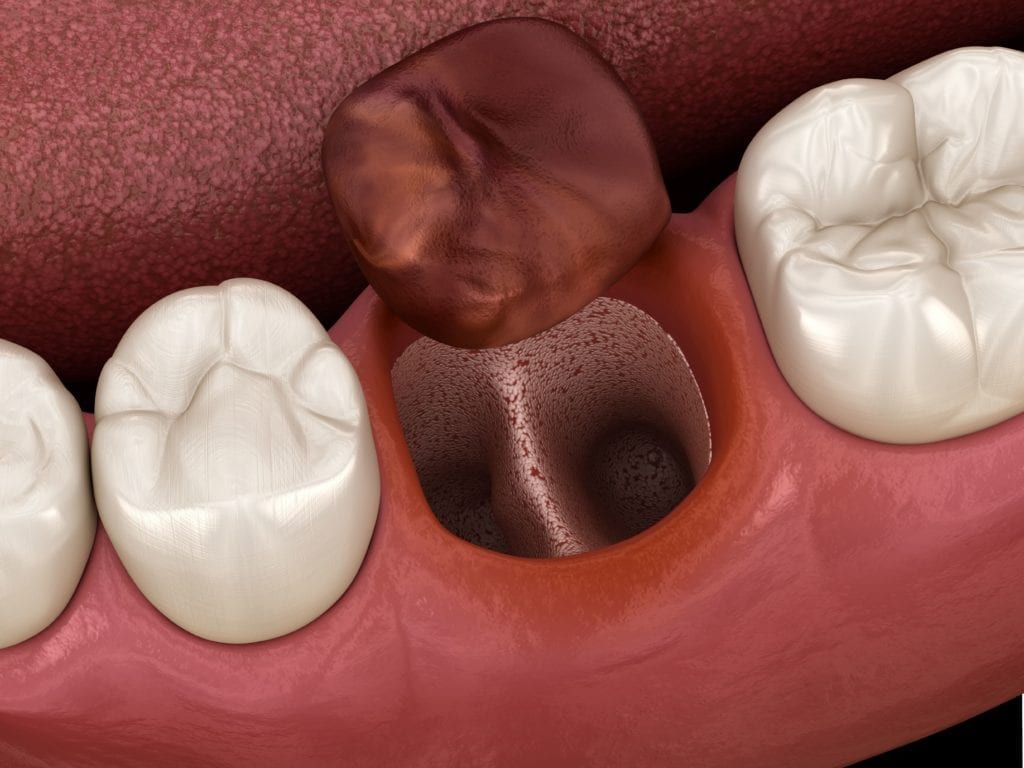If you are having a tooth extracted or if you have had a tooth extracted in the past, then you may be familiar with the term dry socket. A dry socket is the most common complication that can develop after a tooth extraction. Despite the fact that is the most common complication, dry sockets are actually somewhat rare and only affect around 2-5% of routine tooth extractions. Still, it is important to know what a dry socket is and what to expect in the case that you develop one after an extraction. Here are all the things you need to know about a dry socket:

In most cases, the body will form a protective blood clot over the empty socket after a tooth extraction. This blood clot covers the bone, tissue, and nerve endings until the extraction site has healed. When this blood clot fails to form or becomes dislodged, then a dry socket occurs. Dry sockets are known by dentists as alveolar osteitis, which means inflammation of the alveolar bone that lines the tooth socket.
Dry sockets are more likely to occur in molar extractions, as well as extractions affecting teeth in the lower jaw. Additionally, dry sockets are also more likely in extractions involving impacted wisdom teeth. In fact around 30% of impacted wisdom teeth extractions have been known to develop a dry socket.
The most prevalent symptom of a dry socket is pain, especially a throbbing pain that is felt deep in the jaw on the side of the extraction. However, pain from a dry socket may also spread to the ears, eyes, temples, or neck on the same side of the face. If you are experiencing pain after an extraction, you may be able to see the exposed bone that confirms a dry socket. A foul odor and/or taste may also be present.
Your dentist will treat a dry socket by flushing any debris from the socket and then packing the socket with gauze. Pain medication will either be placed into the socket or the gauze will be soaked in medication before being packed into the socket. Either way, most people report almost instant relief after seeking treatment for the pain of a dry socket.
People who smoke, take oral contraceptives, or who have had a dry socket before are at a higher risk of developing a dry socket. Tobacco products of any kind have been known to delay healing, and oral contraceptives contain high levels of estrogen that can also impair healing. If you smoke, it is recommended to abstain from smoking for at least 48 hours prior to an extraction in order to decrease the risk of a dry socket.

The best way to prevent a dry socket after a tooth extraction is to follow your dentist’s postoperative instructions. Generally speaking, these guidelines will provide you with information on what to eat, how to keep the extraction site clean, and how to keep the protective clot in place. They will also recommend a few things you can do to reduce the risk of developing a dry socket such as: avoiding foods that can dislodge a clot, using salt water rinses to reduce bacterial populations, and not smoking for at least 24-48 hours after your extraction.




